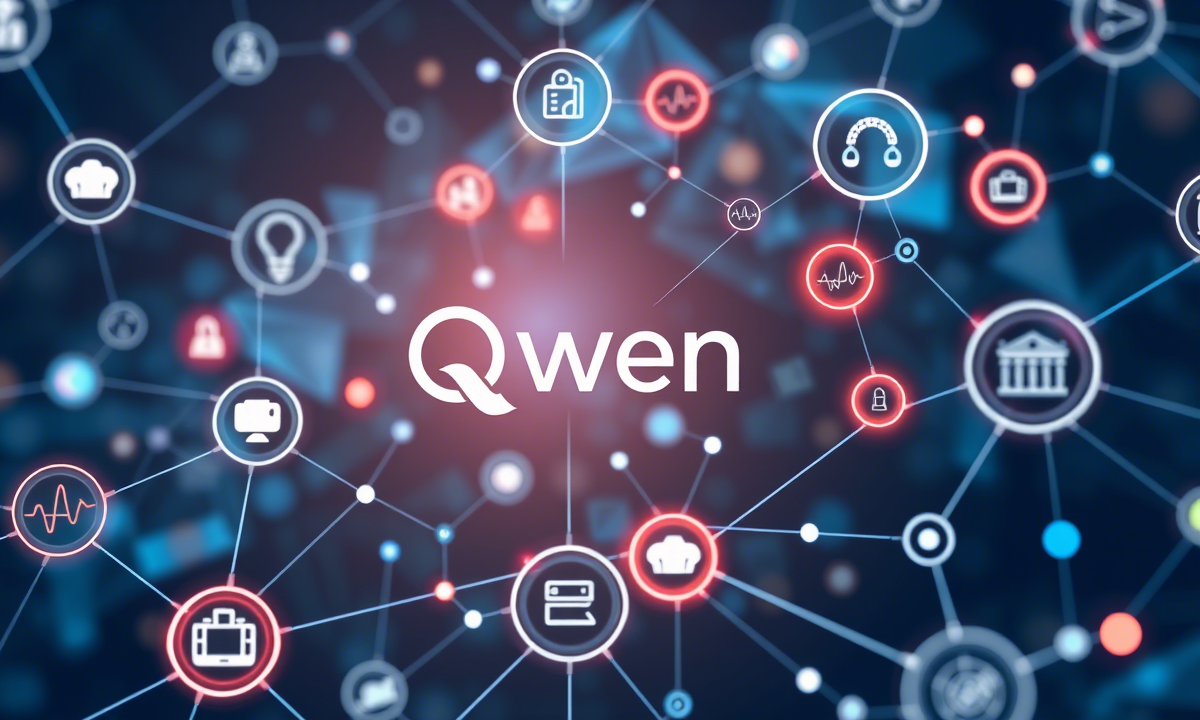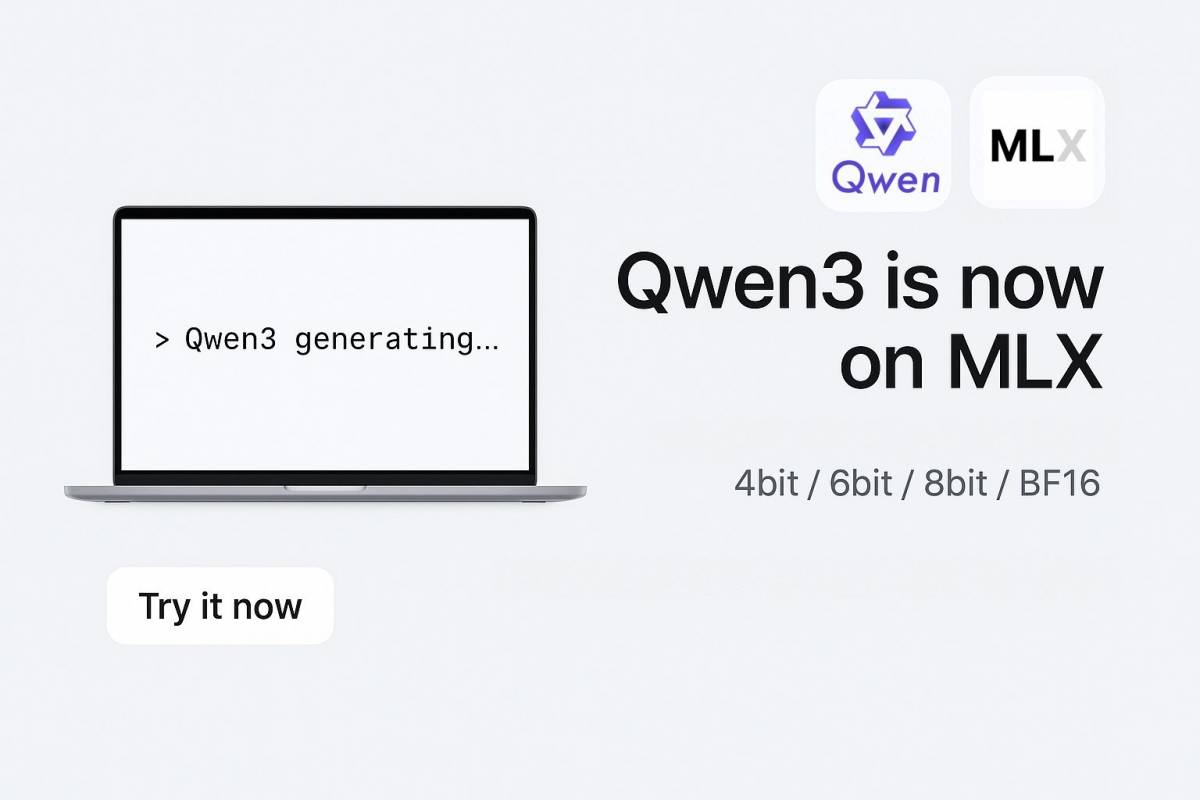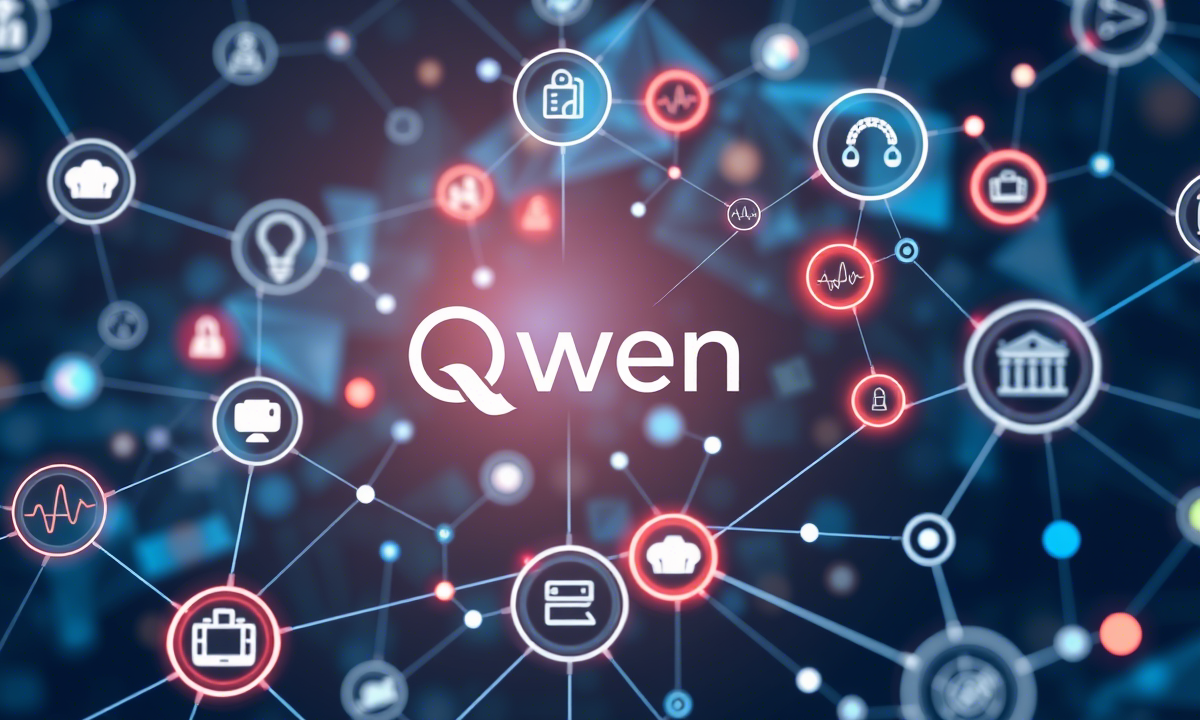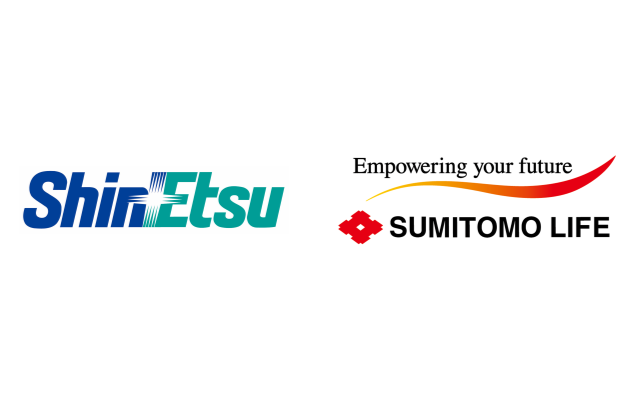
(cover image) generated by chat.qwen.ai
|
Alibaba’s Qwen3, the company’s first hybrid reasoning model family, is gaining rapid traction as it expands across platforms and sectors, powering real-world AI innovation at scale. The latest milestone includes support for Apple’s machine learning framework MLX, an open-source architecture designed for Apple silicon.
The newly launched 32 open-source Qwen3 models, available in 4-bit, 6-bit, 8-bit, and BF16 quantization levels, enable developers to run large language models more efficiently on Apple devices such as the Mac Studio, MacBook, and iPhone. Quantization reduces computational load, reduces the memory footprint of the model and accelerates inference speed, while reducing power consumption and lowering deployment costs to bring advanced AI experiences to edge devices.

Expanding the Edge AI Frontier
With optimized, lightweight versions, Qwen3 is driving broader adoption of edge AI. Leading chipmakers, including NVIDIA, AMD, Arm and MediaTek, have integrated Qwen3 into their ecosystems, delivering measurable performance gains.
NVIDIA showcased how developers can use TensorRT-LLM and frameworks like Ollama, SGLang, and vLLM to maximize Qwen3 inference speeds. According to Nvidia, Qwen3-4B running TensorRT-LLM BF16 achieved up to 16.04x higher inference throughput compared to BF16 baseline models, enabling faster and more cost-efficient AI deployments.
AMD announced support for Qwen3-235B, Qwen3-32B, and Qwen3-30B on its Instinct MI300X GPUs, which are optimized for next-generation AI workloads. With support for vLLM and SGLang, developers can build scalable applications in areas like code generation, logical reasoning, and agent-based tasks.
Arm has optimized Qwen3 for its CPU ecosystem. By integrating Arm® KleidiAI™ and Alibaba’s MNN lightweight deep learning framework, the Qwen3-0.6B, Qwen3-1.7B, and Qwen3-4B models can now run seamlessly on Arm CPU-powered mobile devices, boosting on-device AI inference efficiency and responsiveness.
MediaTek has deployed Qwen3 on its flagship Dimensity 9400 series smartphone platforms. Equipped with MediaTek’s upgraded SpD+ (Speculative Decoding) technology, the Dimensity 9400+ achieves 20% faster inference speeds for AI agent tasks compared to standard SpD.
As Qwen scales from edge devices to data centers, its ecosystem enables new applications in smart homes, wearables, vehicles, and enterprise automation, lowering the barrier to AI adoption across various sectors.
Enterprise Adoption: Qwen Powers Business Transformation
With strong capabilities in language understanding, logical reasoning, and multilingual processing, Qwen is becoming the model of choice for leading companies in consumer electronics, automobiles, and beyond.
Global PC leader Lenovo has integrated Qwen3 into its AI agent Baiying, which now serves more than one million business customers. Baiying leverages Qwen3’s hybrid reasoning, MCP-support, and multilingual capabilities to boost efficiency in office operations and IT management. Its document analysis assistant, Baiying Copilot, supports content in 119 languages, helping Lenovo customers scale globally and streamline cross-region collaboration.
FAW Group, one of China’s largest automakers, built its internal AI agent OpenMind using Qwen and Alibaba’s Model Studio development platform. OpenMind supports daily operations, policy document analysis, and intelligent reporting – bringing multimodal reasoning and tool-calling capabilities to enterprise decision-making.
As of January 2025, more than 290,000 customers across various sectors, including robotics, healthcare, education, finance, and automotive, have adopted Qwen models via Model Studio, Alibaba’s generative AI development platform. This momentum underscores Qwen’s role in accelerating AI-powered digital transformation across industries in China.




